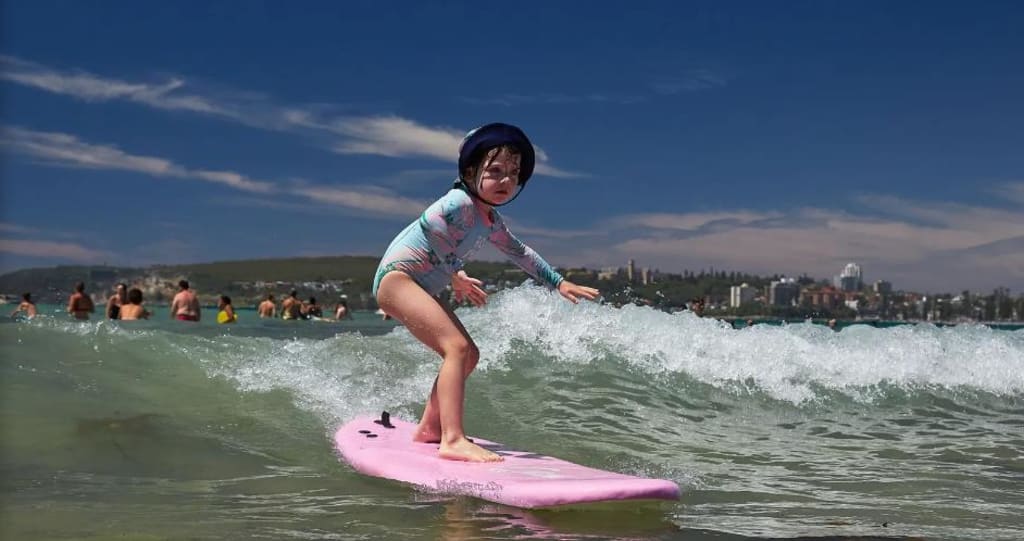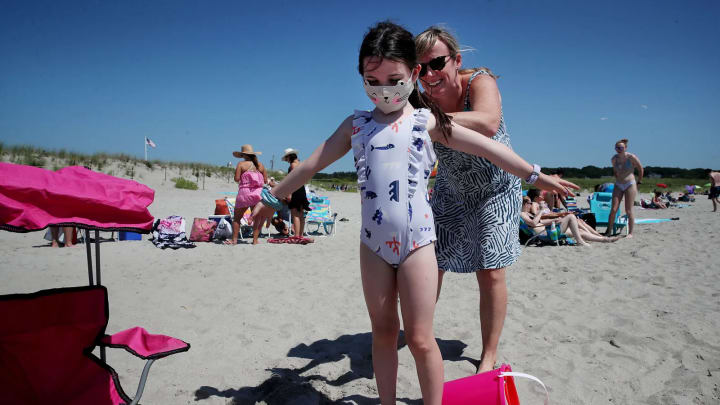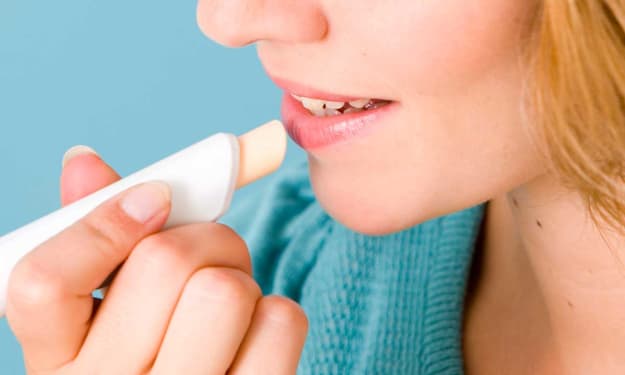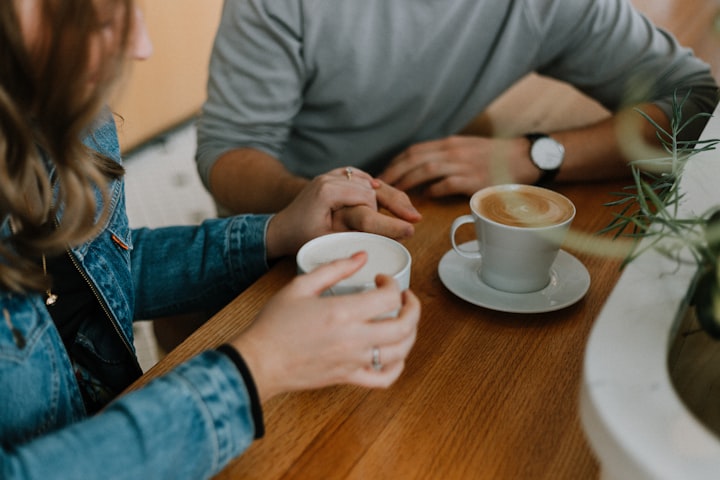Why sunscreen is not enough to prevent sunburns
Five simple steps helped Australia bring down high skin cancer rates – and could help others stay safe in the sun.

When it comes to lowering the risk of developing skin cancer, childhood and adolescence are critical periods. The amount of sun exposure a person has in the first 20 years of their life determines to a substantial degree the likelihood of developing skin cancer, research shows. Just one case of blistering sunburn as a child or teenager has been found to double the risk of developing melanoma, which is the most serious form of skin cancer, later in life.
Australia has one of the highest rates of skin cancer in the world, with a prevalence roughly double that of the UK and United States, due to its intense sun. In fact, melanoma is the most common cancer for Australians aged 20 to 39, and is so common that it has come to be known as Australia's "national cancer" (in the US, it is the third most common cancer in that age group). But in response to that threat, the country has also developed some of the world's most effective measures for skin cancer prevention – which hold powerful lessons for other countries dealing with ever-hotter summers.
Since early sun protection can make such a big difference, one key message from Australian experts is for families to be aware of the danger of ultraviolet (UV) radiation from the Sun, and take a few simple protective steps.
"The UV sort of 'zaps' the DNA in healthy cells," says Justine Osborne, programme manager at Cancer Council Victoria in southeastern Australia. "The cells will repair themselves when the UV exposure disappears, but if you're constantly hitting them with UV there's no chance for them to repair. That is when skin cancer develops." Globally, skin cancer was diagnosed in 6.7 million people in 2019, and it killed 118,000.
Thin skin needs protection
While most of the guidance around sunscreen is applicable to both adults and children, protecting infants from sunburn requires a different approach. Sunscreen should never be used on a baby who is six months or younger, and a child under one year should not be directly exposed to UV rays, according to the Cancer Council. Instead, appropriate protections for babies include lightweight, loose-fitting clothes that allow airflow, dense shade and a soft hat that will not become a choking hazard.
"A baby's skin is very thin and sensitive, and babies tend to suck on things, which means they could ingest the sunscreen," says Osborne. "Babies and young children are particularly susceptible to UV damage, so it's really important that they are well protected whenever the UV index is three or more." The World Health Organization's UV index measures the strength of the ultraviolet radiation from the sun on a given day and place, and ranges from 0 (low) to over 11 (extreme). A higher number means the potential damage to the skin and eye increases, and also, that it can occur more quickly.

Sunburn in children can be particularly dangerous, also because they are more likely to suffer from related conditions such as heat stroke. Experts recommend using sunscreen formulas designed for children, and testing the cream on a small patch of skin first. "True allergies to sunscreen are very rare, but when they occur it is usually caused by the extra ingredients in a sunscreen [such as fragrance], rather than the sun-protective properties," says Osborne.
She points out that sunscreen should be stored below 30C (86F) because if it overheats, the ingredients will start to separate and lose efficacy. "If you're at the beach, keep sunscreen in the cooler box with your drinks. Don't keep it in the glove box of your car. Treat it as a precious thing."
How much sunscreen should you use?
While darker pigmented skin generally takes longer to sunburn, all skin types can be damaged by the sun. Depending on factors such as the UV index and a person's skin type, sunburn can occur in just 10 minutes. UV exposure can raise the risk of skin cancer even when it doesn't cause sunburn. In recent years, research has also shown that sun exposure can cause premature ageing in different skin types, including skin of colour.
"UV is not related to temperature. It is possible to get sunburnt on a cold but clear day. You can also get sunburnt on a cloudy day. You don't feel it until it is too late," says Stuart Henderson, a radiation scientist at the Australian Radiation Protection and Nuclear Safety Agency (ARPNSA). He has co-authored a review of the effectiveness and use of sunscreen in Australia that found that sunscreen is safe for the skin, but the amount of sunscreen and the way it is applied varies considerably between individuals.
Sunscreen should be the last resort – Stuart Henderson
Sunscreen is an effective way to help prevent sunburn in children over six months of age. However, there is widespread confusion about its correct use. Along with damaging myths (such as a fake tan providing protection against sunburn), studies have found that people often apply insufficient amounts of sunscreen. Some assume that sunscreen is itself a complete protection.
"Sunscreen is not a suit of armour: it should be used in combination with some other protection measures," says Henderson. "It should generally be thought of as the last resort when you haven't got any other way to protect your skin."
In Australia, the Cancer Council recommends another four sun protection measures: clothing, shade, a broadbrimmed hat and sunglasses. Their use was popularised through an unusually successful health campaign, launched decades ago in Australia in response to the country's particular melanoma risk.

Slip, Slop, Slap
Annual rates of melanoma in women in Australia are 10 times higher than those of women in Europe. For men, they are 20 times higher. This is partly due to climatic conditions and the fact that the Earth's orbit is not perfectly circular: the southern hemisphere is closer to the Sun during its summer months than the northern hemisphere is in its own summer. As a result, the Sun feels more intense in places like Australia, where UV rates are higher by comparison. (Incidentally, the highest level of ultraviolet radiation ever recorded on Earth's surface was measured in 2003 in the Bolivian Andes, with a UV index of 43).
In 1981, when the dangers of UV rays were becoming apparent, the then Anti-Cancer Council of Victoria launched an education campaign that is ongoing 40 years later.
The SunSmart campaign – also known as the Slip, Slop, Slap campaign – used a cheerful seagull called Syd to encourage people to "slip on a shirt, slop on sunscreen and slap on a hat." Crucially, one of its central messages is that sunscreen alone is not enough. Covering up with clothing, and seeking shade, is also important. It is considered one of Australia's most successful community health campaigns, which is attributed to its longevity, consistency and being well-funded.
"We've seen a decline in melanoma rates in people under 60 in Victoria and under 50 in Australia since the 1980s, when the SunSmart campaign began," says Osborne. "This is a cohort of people who used to embrace the sun and loved getting a tan. It was a huge ask to tell them to take protective measures, and it was a big cultural shift."
The message needs to be constantly reinforced – Phil Barker
"There's absolutely no doubt that the Slip, Slop, Slap campaign increased public awareness of sun exposure, and it has been hugely effective in influencing our behaviour," says Phil Barker, honorary principal fellow in chemistry at the University of Wollongong. "But the message needs to be constantly reinforced to educate the new generations of parents and their children."
Indeed, recently there have been alarming incidents of sunburn reported in Australia. A report on cases of sunburn at Victorian emergency departments showed that the summer of 2018-19 had the second highest number of cases since 2004. One in two hospital presentations for sunburn were children and adolescents, and one in five were children under nine years of age.
Sun warnings by phone
An app developed in Australia, and co-designed by Cancer Council Victoria, ARPANSA and other organisations, aims to help prevent skin cancer skin cancer by showing users the UV index in their local area. A global version, the free SunSmart Global UV phone app, was launched by the World Health Organization and its partners this year. The app will be especially helpful for those holidaying in new destinations, according to Barker.
"If you're going to an unfamiliar place, make sure you know what the expected UV index is, and amend your sun protection strategies accordingly," says Barker.
Barker is currently working on developing "next generation" sunscreens that are specifically designed to provide protection in Australia's extreme exposure conditions. He estimates they may be on the market by 2026.

The future of suncare?
Developing new ways to remind people to reapply their sunscreen can be a difficult area for scientists to research, says Elke Hacker, a senior research fellow in public health at Griffith University. "We need to know whether the technology developed in the lab is useful in the real world, but it is morally inappropriate for scientists to put people potentially in risky environments where they will be wearing their sunscreen out."
However, Hacker and her team at Queensland University of Technology found an environment where people voluntarily sit in the sun for over four hours: a cricket match.
The team studied the effect of UV detection stickers reminding people to reapply their sunscreen during the four-day Ashes Test of 2017 in Brisbane, Australia. The stickers change colour in response to UV. A total of 428 people completed the study, which made it the largest of its kind. The sticker was clear when the sunscreen was freshly applied, and when the sunscreen wore off it and it was time to re-apply, the sticker's colour changed to purple. There was also a control group of people who were provided with free sunscreen, but no stickers; while the sticker group were provided with free sunscreen, and stickers.
The stickers were found to improve the frequency of sunscreen reapplication, prompting 80% of cricket goers to reapply their sunscreen as compared with 68% in the control group. However, the results also highlighted the challenges of sunscreen use: 39 people wearing stickers still experienced sunburn, perhaps because they were simply exposed to the sun for too long, or because the sunscreen was not properly reapplied.
"Previous studies have shown that people sometimes apply only half the recommended thickness to cover the skin," says Hacker.
The correct amount is two milligrams per square centimetre, which is equal to seven teaspoons of sunscreen for an adult body. That equates to one teaspoon for each arm and leg, two for the torso, plus one teaspoon for the face, neck and ears. It needs to be reapplied every two hours.

Sunscreen basics
Experts recommend using a broad-spectrum sunscreen lotion that has a sun protection factor (SPF) 30 or above and putting it on 20 minutes before you go out in the sun. This will give it a chance to sink into the skin's pores and prevent it from immediately being brushed or sweated off. If you're going out doing things like swimming and then toweling off, or exercising and sweating, you'd need to reapply. "With kids, the same rules apply," says Henderson.
Lotions may be more effective than aerosols, with research suggesting the latter can be insufficiently protective in windy conditions. Hacker's latest study at Griffith University tested five aerosol sunscreens and found 28% to 93% of aerosol sunscreen was lost in 20 kilometre per hour winds, and 32% to 79% of aerosol sunscreen was lost when the wind dropped to 10 kilometres an hour. These winds are considered everyday conditions at Australian beaches.
"In some cases, a person would need to spray an aerosol sunscreen for up to 250 seconds per limb, or more than a bottle's worth, to provide adequate protection to the whole body," says Hacker.
Some may consider just staying out of the sun altogether, but Barker says that would be neither practical nor healthy. Others agree.
"Our bodies need some sunlight for vitamin D production and there are other benefits to running around outdoors, especially in childhood. There's been links with children not spending enough time outdoors and developing short-sightedness," says Henderson.
Instead, a good option is to enjoy the summer sunshine at the start and the end of the day, when the UV rays are lower. In Australia, there's yet another mnemonic for that: Between 11 and 3, slip under a tree.
About the Creator
washington ardenia
A great man is always willing to be little






Comments
There are no comments for this story
Be the first to respond and start the conversation.